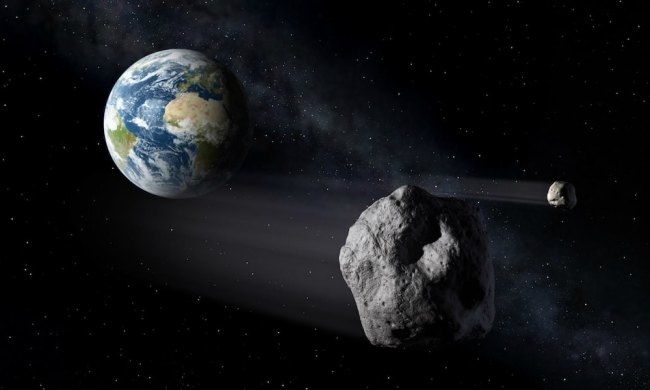
The last week saw not one but two asteroids whip by Earth at close distances — not so close as to threaten the planet, but close enough for scientists to get a good view of them. Asteroid hunters tracked the pair as they passed by, and they were even imaged by NASA instruments to learn more about asteroids, including those that could potentially threaten Earth in the future.
Asteroids 2024 MK and 2011 UL21, named for their respective years of discovery, made close approaches to Earth on June 27 and June 29. Asteroid 2011 UL21 came within 4.1 million miles of the planet, and was nearly a mile wide — big and close enough to classify it as a potentially hazardous object. However, using data about its orbit, astronomers have run the numbers and determined there’s no chance of it impacting the Earth any time soon.
While the asteroid was passing by, it was being observed by astronomers. NASA scientists used one of the radars of its Deep Space Network (the network NASA uses to communicate with its spacecraft in deep space) to bounce radio waves off the asteroid and study it. They found that it is actually part of a pair called a binary system, with a tiny moonlet orbiting it at a distance of around 2 miles.
“It is thought that about two-thirds of asteroids of this size are binary systems, and their discovery is particularly important because we can use measurements of their relative positions to estimate their mutual orbits, masses, and densities, which provide key information about how they may have formed,” said Lance Benner, principal scientist at NASA’s Jet Propulsion Laboratory who helped lead the observations.
The second asteroid that passed by came even closer, at 184,000 miles from the planet, which is closer that the moon is. It was smaller, at around 500 feet across, and was a long and angular shape. Researchers used a similar method of bouncing radio waves off the asteroid to observe its jagged, complex surface. They were able to get a close-up view of the object, which is rare as it came so close.
“This was an extraordinary opportunity to investigate the physical properties and obtain detailed images of a near-Earth asteroid,” Benner said.



